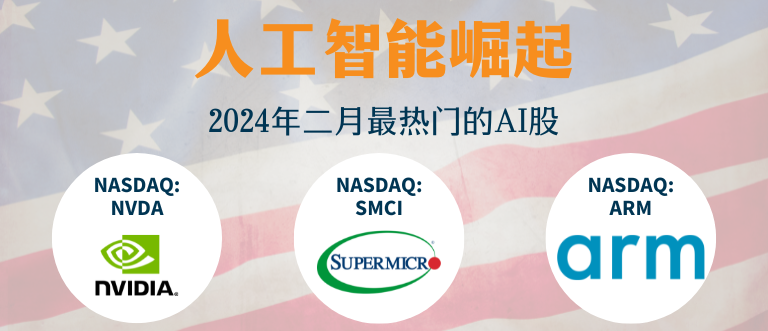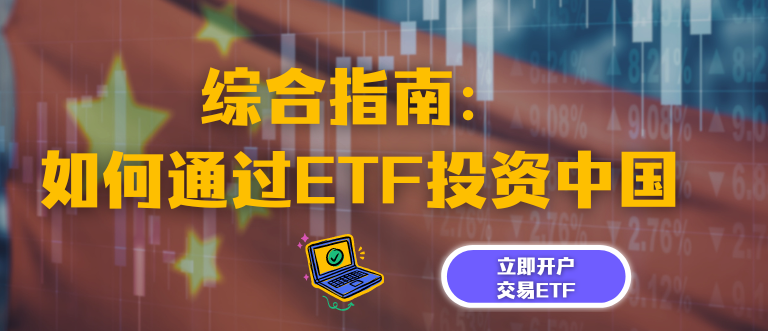Going Long
Table of Contents
Going Long
In the stock market, investors employ various strategies to capitalise on market movements and optimise their portfolios. “Going Long” is a fundamental concept that forms the bedrock of many investment strategies, providing traders with the opportunity to profit from upward price movements in securities. Going long in trading is a foundational strategy employed by investors to profit from upward price movements. Even though there is a chance for large profits, investors must use sensible risk management techniques and keep up with market developments. Investors who grasp the long game are better equipped to handle the intricacies of the stock market with poise and strategic judgment.
What is Going Long in Trading?
Going long, or taking a long position, is a trading strategy where an investor anticipates that the value of an asset will rise over time. In simple terms, to sell an asset later on at a higher price and keep the difference as profit, entails purchasing an asset with the hope that its price will rise.
Long-term traders usually hold an optimistic view of the market or a particular asset. They believe that the underlying factors influencing the asset, such as company performance, economic indicators, or market trends, will contribute to a rise in its value.
Understanding Long in Trading
Understanding the concept of going long involves recognising it as a bullish strategy. Investors opt to go long when they have a positive outlook on the future performance of a particular asset or the market as a whole. This strategy contrasts with going short, where investors profit from a decline in asset value.
When a trader decides to go long on a particular asset, they initiate a buy order. This means he acquires the asset to hold it for an extended period, anticipating that its value will appreciate. Going long is often associated with a bullish market sentiment, where optimism about the asset’s future performance is a driving factor.
Going long offers traders the opportunity to profit from a positive market outlook. It is a tactic used by investors who think a certain asset or market has room to grow over the long run. Additionally, going long aligns with a buy-and-hold approach, allowing investors to ride out short-term fluctuations in the pursuit of long-term gains.
Risk Management in Long in Trading
While going long can be a profitable strategy, effective risk management is crucial. Long trading involves buying an asset with the expectation that its value will increase over time. While this strategy can yield substantial profits, it also exposes traders to inherent risks, making prudent risk management strategies essential.
Firstly, setting a clear risk tolerance is crucial. The maximum amount of capital that a trader is willing to risk on a single transaction must be determined. This ensures that losses are controlled and don’t escalate beyond acceptable levels. Risk tolerance is influenced by individual financial goals, market conditions, and the trader’s experience.
Another important component of risk control in long trading is diversification. Traders can lessen the effect of a poorly performing asset on their overall portfolio by distributing their investments throughout a variety of assets or industries. This diversification strategy helps cushion potential losses and enhances the chances of overall portfolio growth.
Additionally, leveraging risk-reward ratios is crucial for maintaining a healthy risk management strategy. By assessing potential gains against possible losses before entering a trade, traders can make well-informed judgments that complement their financial goals and risk tolerance.
Pros and Cons in Long in Trading
Pros:
- Profit Potential: Going long provides an opportunity for significant profits if the asset’s value increases.
- Aligns with Bullish Outlook: Suited for investors who are optimistic about the market or a particular asset.
- Dividend Income: Many long-term investments, especially in stocks, offer the opportunity to receive dividends, providing a steady income stream for investors.
- Tax Benefits: In some jurisdictions, the tax rate on long-term capital gains is lower than that on short-term gains, offering potential tax advantages for investors holding positions for an extended period
Cons:
- Market Downturns: If the market or the specific asset experiences a downturn, losses can occur.
- Limited Profit in Declining Markets: Unlike short positions, where profits can be made in declining markets, going long relies on upward price movements.
- Opportunity Cost: While waiting for long-term investments to mature, investors may miss out on shorter-term opportunities in more dynamic market conditions.
- Interest Rate Risks: Long-term bonds and fixed-income securities may be sensitive to interest rate fluctuations, potentially impacting their market value.
Examples of Long in Trading
Imagine an investor is interested in a technology company. After conducting thorough research on the company’s financial health, growth prospects, and overall market conditions, the investor decides that the stock is undervalued and poised for an upward trend.
Imagine an investor is interested in a technology company. After conducting thorough research on the company’s financial health, growth prospects, and overall market conditions, the investor decides that the stock is undervalued and poised for an upward trend.
For instance, if the investor goes long on a US-based tech stock trading at US$50 per share, buying 100 shares for a total investment of US$5,000, and the stock appreciates to US$70 per share, the investor could sell the shares for US$7,000, realising a US$2,000 profit.
Long positions are not limited to individual stocks; investors can also take a long position on other financial products, including exchange-traded funds (ETFs), commodities, or currencies. The key to success when going long lies in careful analysis, risk management, and staying informed about market trends and economic indicators.
Frequently Asked Questions
An investor using a long-position investment strategy purchases a financial instrument with the expectation that its value will increase over time, allowing them to profit from selling it at a higher price.
A long position involves buying an asset with the anticipation of its value increasing over time, while a short position entails selling an asset with the expectation of profiting from its decline. This fundamental difference in market strategies allows investors to navigate and capitalise on diverse market conditions with strategic foresight.
A long position can be strategically employed in trading markets. Investors take a long position by buying an asset with the expectation that its value will rise over time. This strategy is commonly utilised in stock markets, commodities, and currencies. By going long, investors aim to capitalise on potential price appreciation, thereby maximising their returns in these dynamic financial environments.
Common types of long positions include outright long positions, long calls in options trading, and buying long-term bonds. Each type caters to different investor objectives and risk tolerance.
Related Terms
Most Popular Terms
Other Terms
- Options expiry
- Adjusted distributed income
- International securities exchanges
- Settlement currency
- Federal funds rate
- Synthetic ETF
- Physical ETF
- Notional amount
- Negative convexity
- Jumbo pools
- Inverse floater
- Forward Swap
- Underwriting risk
- Reinvestment risk
- Final Maturity Date
- Payment Date
- Secondary Market
- Margin Requirement
- Mark-to-market
- Pledged Asset
- Yield Pickup
- Subordinated Debt
- Trailing Stops
- Treasury Stock Method
- Stochastic Oscillator
- Bullet Bonds
- Basket Trade
- Contrarian Strategy
- Exchange Control
- Notional Value
- Relevant Cost
- Dow Theory
- Speculation
- Rand cost averaging
- Sustainable investment
- Stop-limit sell order
- Constant prepayment rate
- Covenants
- Companion tranche
- Synthetic replication
- Beneficiary
- Reverse stock splits
- Quiet period
- Prepayment risk
- Interpolation
- Homemade leverage
- Hyperdeflation
- Hope Credit
- Prime bank investments
- Purchasing power
Know More about
Tools/Educational Resources
Markets Offered by POEMS
Read the Latest Market Journal

本文旨在为中级外汇交易者提供必要的信息和知识。它将涵盖我们上一篇文章 “五分钟看懂世界上最活跃的市场-外汇差价合约(FX CFD)...

解锁台湾股市的投资潜力!深入了解由强大的技术驱动型经济推动的股票市场,2023 年机械和电气设备将占出口的 69%。在政治稳定、投资者友好的法规和健全的法律框架下,探索台积电和富士康等全球顶级企业。台湾股市值得称赞的历史表现和在国际贸易中的的重要性使其更具吸引力。在这个科技实力雄厚、经济稳定、充满活力的股票市场中,抓住增长机遇!

了解外汇市场 外汇交易市场又称外汇市场,是一个买卖货币的全球性金融市场。它是全世界规模最大、流动性最强的金融市场,每日交易量超过 6 万亿美元。但外汇市场有一个重要却常被忽视的一点,就是它受交易心理的影响。在本文中,我们将探讨外汇市场的复杂性,还有把重点放在交易心理与传统交易策略共同发挥的关键作用...

五分钟看懂世界上最活跃的市场 -外汇差价合约(FX CFD)
外汇交易市场俗称外汇或外汇市场,是全球金融市场的支柱。它是世界上最活跃的市场,2022 年 4 月,全球交易额达到创纪录的每天 7.5 万亿美元[1] 。这个活跃的市场为交易者提供了利用货币价格波动赚取利润的机会。在本文中,我们将解释外汇市场的基本原理,助您了解其投资机制。 什么是外汇? 外汇市场是一个分散的全球市场,世界上所有货币都在这里进行交易...

随着通胀数据趋向 2% 的理想目标,人们普遍乐观地认为,在任何可能的降息之前,市场都不会受到不利影响。以下是美股市场2024年的一些重要事件,投资者在做出投资决策时可以参考留意。

根据《东南亚态势报告:2023》,失业和经济衰退是当前东南亚面临的主要挑战。各国采取了各种政策和措施以恢复经济,尽力摆脱新冠疫情的影响。尽管如此,越南在经济和社会方面展现出了令人满意的复苏迹象,经济增长逐季上升,成为世界经济的亮点之一。虽然全年GDP增速放缓至5.05%,低于政府6.5%的目标,但越南仍然是地区和世界经济增速较快的国家之一。






















